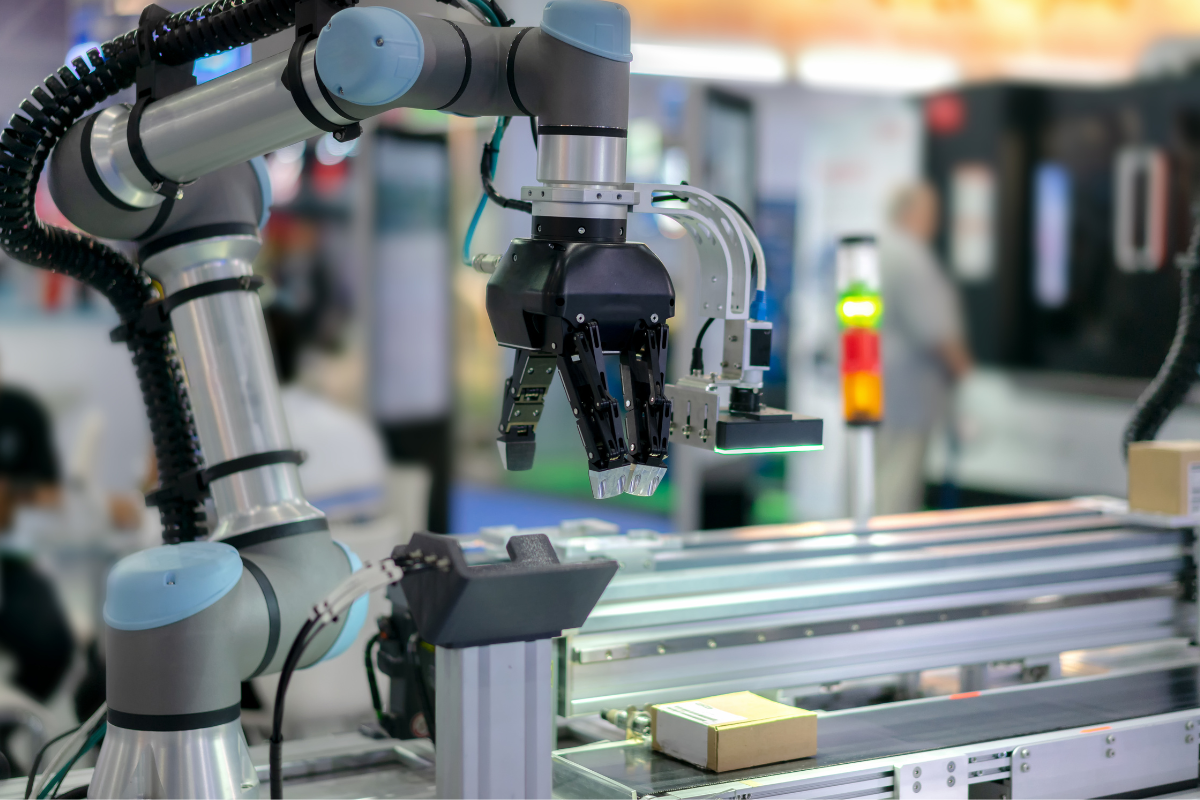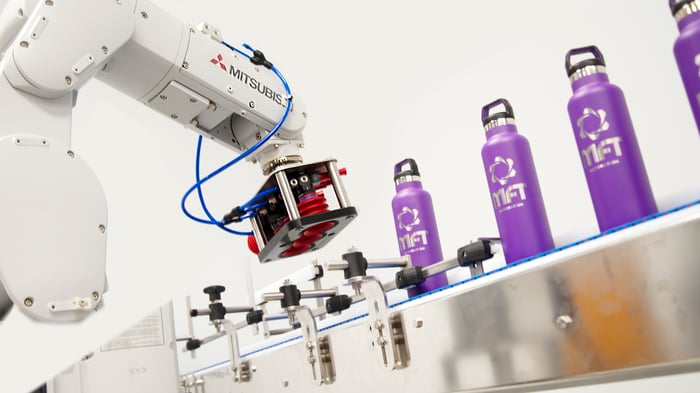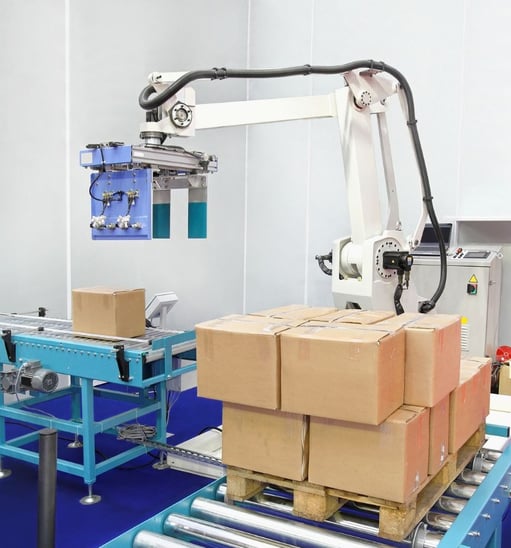Since the dawn of automation, the food packaging industry has always been a top consumer of robotics for their production lines. The fast-paced food packaging industry works hard to keep up with the growing demands of consumers and recently has been trying to overcome the recent global events and concerns. The food packaging robotics market size is expected to grow by over $1.03 billion in 2022. The COVID-19 pandemic has increased public interest in food safety with many consumers demanding transparency and pushing for more regulations and requirements for food packaging. This public outcry has incentivized companies to eliminate even more human contact from their food packaging production lines. To meet the growing food safety and output demands of consumers, the food packaging industry is once again turning towards more automation.
Before we get into the robotics applications and trends in the food packaging industry, it's important to know the three levels of food packaging that will be referenced. In food packaging, there are three types of food packaging that define the requirements and guidelines of food safety and the work environment.

Primary Packaging - in direct contact with raw food and the first layer of protection
Secondary Packaging - exterior packaging of the primary packaging.
Tertiary Packaging - Usually for shipping/transport, secondary packaging is placed in the tertiary packaging as yet another layer of protection
Recent studies show that automation in the primary and secondary packaging processes is growing exponentially. Let's explore some of the applications and trends in the food packaging industry.
 Cobots
Cobots
Collaborative robots or cobots are ramping up production lines around the world. Working side by side with human workers, cobots come in all shapes and sizes. From robotic arms that pick and place food to automated guided carts that zoom around food packaging warehouses, cobots have a wide range of applications. There’s a huge increase in productivity and efficiency when humans work alongside robots as the robots complete difficult or tedious tasks while humans do the more complex tasks. Easy to program and fast to set up, cobots easily integrate into processes. Robotic coworkers will only grow in numbers as technology advances and more processes are automated.

Pick and Place Robots
Pick and place robots can be found in all three levels of packaging with many different applications from loading raw food products into packaging trays or cartons to loading packaged goods into tertiary packaging. Pick and place robots are a simple yet powerful way to automate the food packaging process. Pick and place robots use sensors to locate and quickly relocate products. They are easily integrated into existing lines and can be flexibly designed based on the customer’s applications.
Boxing Robots
The simple task of boxing up food in the secondary or tertiary packaging process is easy to automate. In secondary packaging, where the food products are already enclosed in primary packaging, there is a lower risk of contamination so the boxing robots are not required to be food safe or hygienic. Pick and place robots are the most common in these applications. With the ability to move products quickly and delicately, pick and place robots are the optimal choice for boxing.
Palletizing Robots
Palletizing or palletization is the action of placing products on a pallet for shipment or storage. The products need to be arranged and stacked in a pattern that maximizes the number of products that fit on the pallet while preventing products from shifting and possibly crushing each other. When palletizing during the tertiary packaging process, robots take over the heavy lifting labor of arranging and moving products onto pallets. As one of the most common robotics applications in the food packaging industry, robots are flexible enough to handle the different tasks in the palletizing process. Robotic solutions can handle mixed pallets with products of various shapes and sizes.
Automated Quality Control
Quality of packaging is of high importance to the customer but also from a food safety standpoint. Defects in packaging can leave the raw food vulnerable to contamination and recalls can cost companies millions. Manual quality control can be time-consuming and during times of high demand, flaws and imperfections are missed during the push. Automated quality control takes less time with sensors able to identify deficiencies in a fraction of a second. With the products with obvious flaws disposed of, a human can do a more subjective and thorough check overall increasing the quality.

MFT Automation: Your Robotics Integration Partner
MFT Automation is a proud Diamond Partner with Mitsubishi Electric Automation. We provide a robotic, end-of-arm tooling option for a wide variety of packaging solutions. Our robotic capabilities range from simple pick-and-place applications to more complex packaging applications. Robotic integration brings many benefits to any packaging line and is the perfect piece to finish off a fully integrated system. Robots are available in ISO3 clean room, IP20, IP65, food grade, and chemical resistant versions. Payloads range from 1 kg to 20 kg with 150 mm to 1000 mm reaches. Contact us about your automation challenge! Call 1-651-427-1264 or contact us online.




